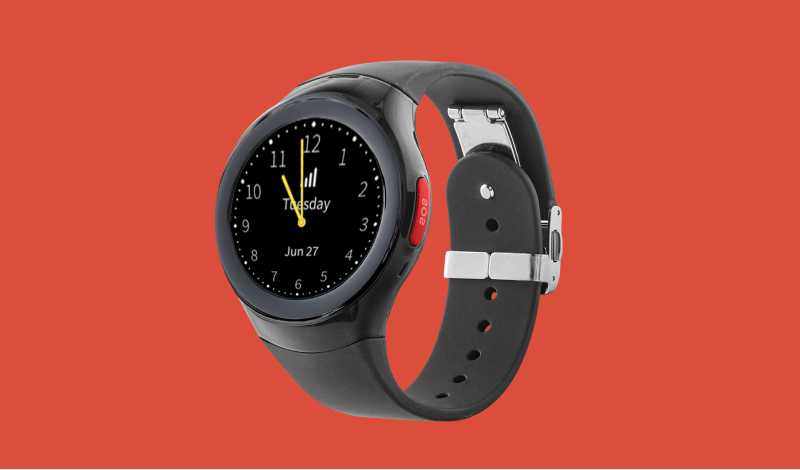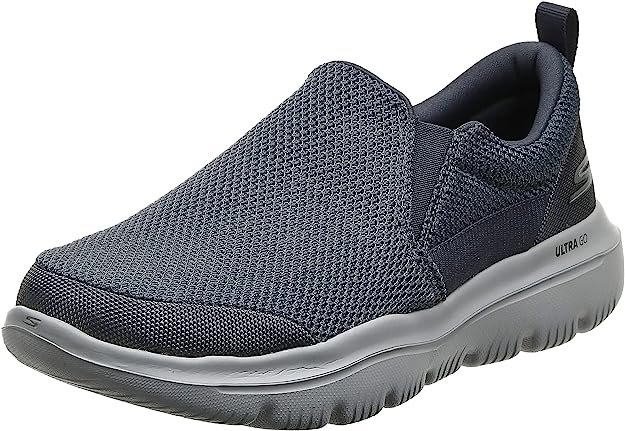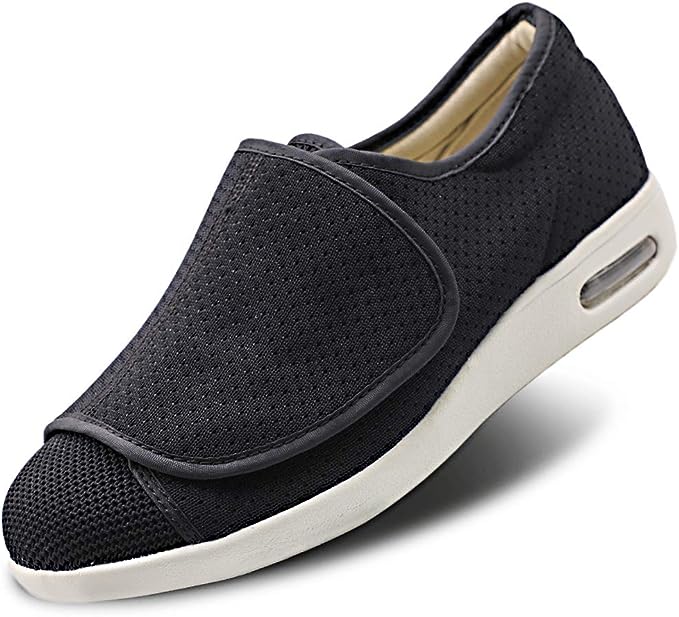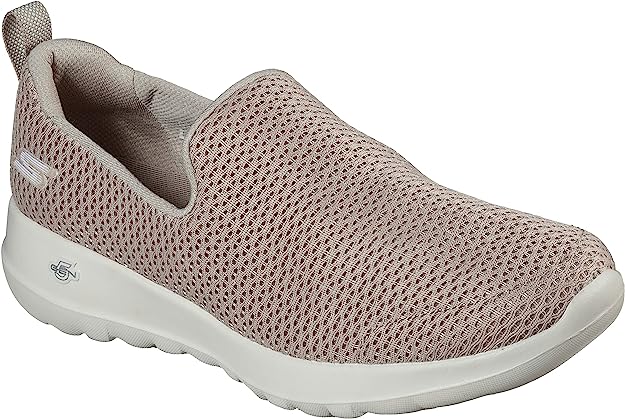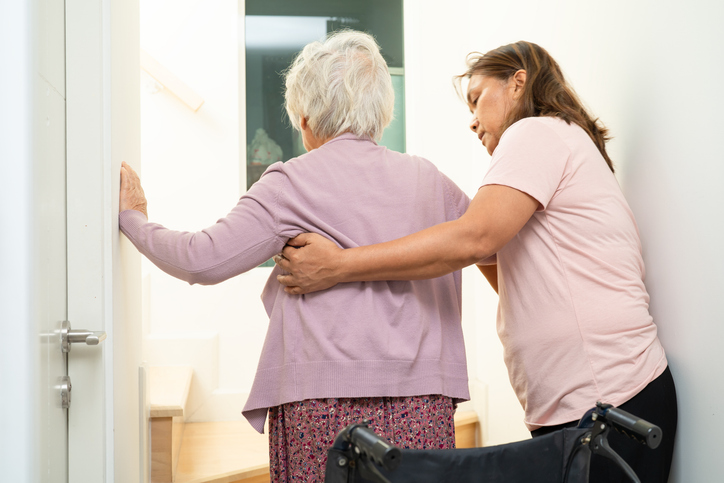Choosing the Best Orthopedic Shoes for Seniors
Selecting the right footwear for seniors plays a vital role in ensuring their safety, comfort, and overall quality of life. As we age, our feet experience natural changes such as reduced cushioning, less flexibility, and the onset of various foot conditions. A well-chosen pair of orthopedic shoes can significantly ease discomfort, enhance balance, and support seniors who are looking to stay active.
It’s important also to consider the safety aspects. We stand on our feet, and we can easily trip or slip, and fall, at any age of life, but especially as we grow older. Good footwear is key, but remember to pay some attention also to trip hazards in the home, and some fall prevention safeguards, as well as thinking about a wearable medical alert system to send an alarm call if the wearer falls and is unable to stand. Solutions exist for both home use and outdoors.
Here’s a guide to what to look for and some of the best orthopedic shoe options for seniors.
What to look for when shopping for orthopedic shoes for seniors:
- Comfort: Comfort should be the top priority. Look for cushioned insoles, solid arch support, and a spacious toe box that can accommodate swelling or foot deformities.
- Stability: To help prevent slips and falls—common risks for older adults—choose shoes with non-slip soles and a stable, secure grip.
- Ease of Use: Shoes with adjustable features like Velcro straps or elastic laces make it easier for seniors, especially those with limited hand strength or dexterity, to put on and remove their shoes.
- Lightweight: Heavy shoes can cause fatigue and increase fall risk. Lightweight materials ease the burden on feet and legs.
- Breathability: Good airflow helps maintain dry, healthy feet and prevents fungal infections.
- Function: Think about what activities the shoes will support—whether it’s walking around the neighborhood, participating in exercise classes, or simply moving comfortably at home. Knowing their main use will help you select the right style and features.
- Fashion: Today’s orthopedic shoes are more stylish than ever. You can find options that allow you to enjoy comfort and support without sacrificing personal style.
- Physician Recommendation: Before making a purchase, consult with your doctor or podiatrist. They can suggest specific features or styles that best suit your individual foot health needs.
Best Orthopedic Shoes for Men
Best for Plantar Fasciitis, Walking Shoe – Shop Now
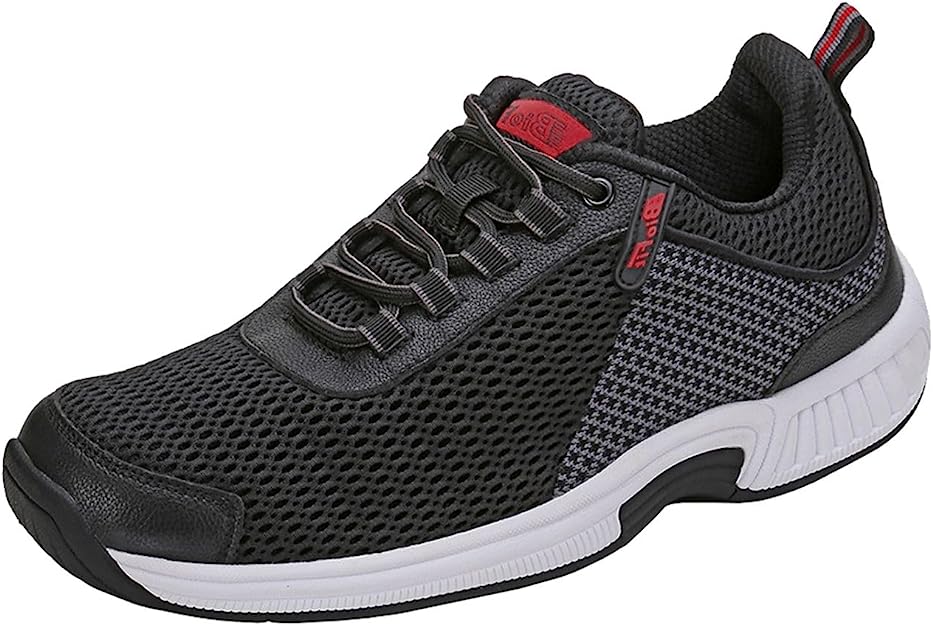
Plantar fasciitis can cause intense heel pain, especially during the first steps of the day. The right footwear offers the cushioning and support needed to manage symptoms and promote easier movement.
Highlight: Features a rubber sole for better traction and stability, plus a wide toe box and stretchy knitted material for a customized, comfortable fit.
Diabetic Shoe for Men Extra Wide – Orthopedic Slip On – Show Now
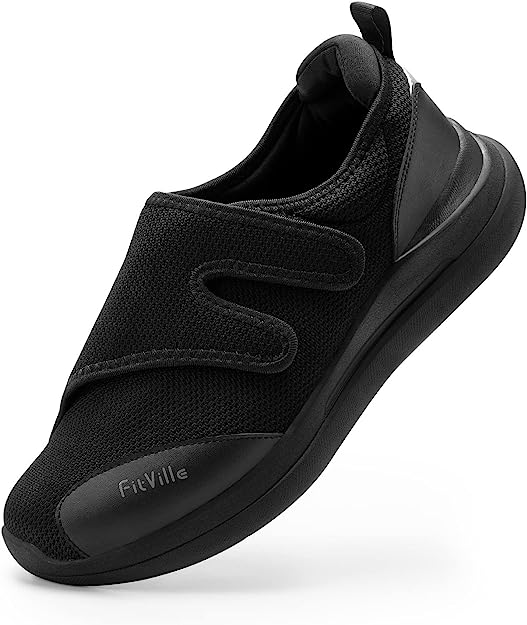
Managing diabetes means paying special attention to foot health. Proper footwear can protect against ulcers, promote circulation, and support overall foot comfort.
Highlights: Extra-wide toe box and high instep for a roomy fit. Breathable fabric and a rubber sole help keep feet cool and stable. Built-in arch support and an ergonomic insole enhance comfort.
Men’s Easy Slip On – Skecher’s Sneakers – Shop Now
As mobility becomes more challenging with age, ease of use is key. Slip-on sneakers eliminate the need for bending down and tying laces, making daily routines simpler.
Highlights: Soft, breathable woven mesh. Ultra-lightweight at just 7.2 oz. Plus, they’re machine washable for easy care.
Walking remains one of the best low-impact exercises for seniors. Foot pain, however, can make it difficult. The right shoes can alleviate foot, back, and even leg pain, helping you stay active and comfortable.
Highlights: Ideal relief for conditions like diabetes, plantar fasciitis, and bunions.
Everyday Walking Shoes for Women – Shop Now
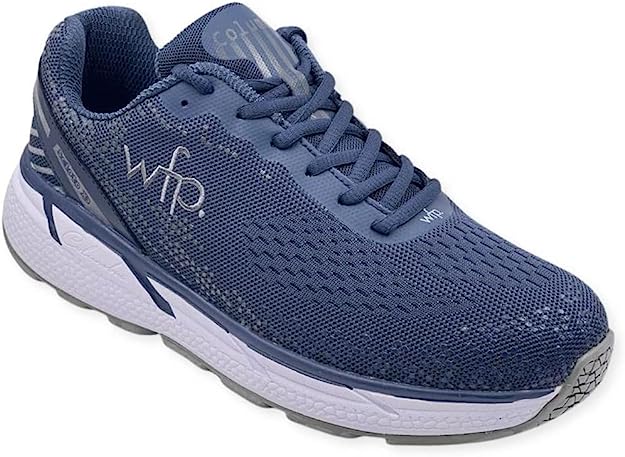
Buying walking shoes online? Always check the return policy. A flexible return policy lets you wear the shoes at home—or even outside—for a trial period, ensuring they truly meet your needs before you commit.
Highlights: Excellent customer reviews for comfort and accurate sizing.
Women’s Go Joy Walking Shoe Sneaker – Shop Now
Slip-on sneakers aren’t just practical—they’re stylish too. Perfect for casual strolls, coffee dates, or errands, these sneakers combine fashion with function.
Highlights: Highly rated for comfort and lightness. Bonus: they’re machine washable for added convenience.
What are the most common foot problems in seniors?
- Arthritis: Both osteoarthritis and rheumatoid arthritis are prevalent among older adults, often leading to joint pain, stiffness, and limited mobility in the feet.
- Bunions: Bunions are bony bumps that form at the base of the big toe, causing the toe to angle inward toward the others. They can be painful and make finding properly fitting shoes a challenge.
- Corns and Calluses: These thickened areas of skin develop from repeated friction or pressure, often due to wearing shoes that don’t fit correctly.
- Plantar Fasciitis: This condition involves inflammation of the tissue along the bottom of the foot, leading to sharp heel pain, especially when taking the first steps after resting.
- Ingrown Toenails: When the edge of a toenail grows into the surrounding skin, it can cause significant pain, redness, and increase the risk of infection.
- Hammertoes: Hammertoes occur when the toe joints bend abnormally, creating a claw-like shape. This deformity can cause pain and make corns or calluses more likely.
- Morton’s Neuroma: This painful condition results from a thickening of tissue around a nerve between the toes, often causing a burning, tingling sensation in the ball of the foot.
- Flat Feet: When the arches of the feet collapse, it can lead to reduced shock absorption and strain, resulting in foot pain and fatigue.
- Heel Spurs: Heel spurs are bony growths that develop on the heel bone, often linked to chronic plantar fasciitis or prolonged pressure on the heel.
- Gout: Gout is a type of arthritis that often targets the big toe, causing intense pain and swelling due to the buildup of uric acid crystals in the joint.
- Peripheral Neuropathy: Nerve damage in the feet can cause numbness, tingling, and weakness, raising the risk of falls and injuries.
- Fungal Infections: Older adults are more prone to fungal infections like athlete’s foot, often due to decreased circulation and weakened immune response.
- Foot Ulcers: Seniors, particularly those with diabetes, may develop foot ulcers from poor blood flow and neuropathy, leading to slow-healing wounds.
Choosing the best orthopedic shoes for seniors takes careful consideration. It’s important to match the footwear to the individual’s specific foot conditions and needs. Prioritizing comfort, ease of use, and proper support can make a significant difference. Styles like orthopedic shoes, slip-ons, Velcro shoes, and wide-toe-box designs are among the most recommended options. Investing in the right pair not only enhances comfort but also supports safety and mobility, helping seniors continue to enjoy their everyday activities with confidence.
Haley Burress – Writer, Senior Health Expert
Haley is a freelance writer specializing in senior health, caregiver support, and other topics relevant to older adults and aging. For more than 15 years, she had the honor of working in various senior living communities serving residents, families, and professional caregivers in local and national leadership roles. She uses that experience and those opportunities as she writes reliable, relatable, and realistic information that is designed to both educate and empower.
Over the past decade, Haley has had the opportunity to write informational resources, including extensive caregiver curriculum and training, for small and large senior service organizations. Her readers expect her to break down the sometimes overwhelming and frustrating information that comes with navigating senior living research, Medicare, and other social-emotional health topics.
When she isn’t writing at her desk (or at a corner table at her favorite coffee shop), Haley is usually walking her dog Junie around the neighborhood, exploring a new trail with her husband and teenage son, or sweating out stress on her Peloton bike. Just like other writers, Haley almost always has her nose in a book.
She takes her role as a senior living and caregiver expert seriously! You can find her elsewhere on the internet, such as her website or LinkedIn.



